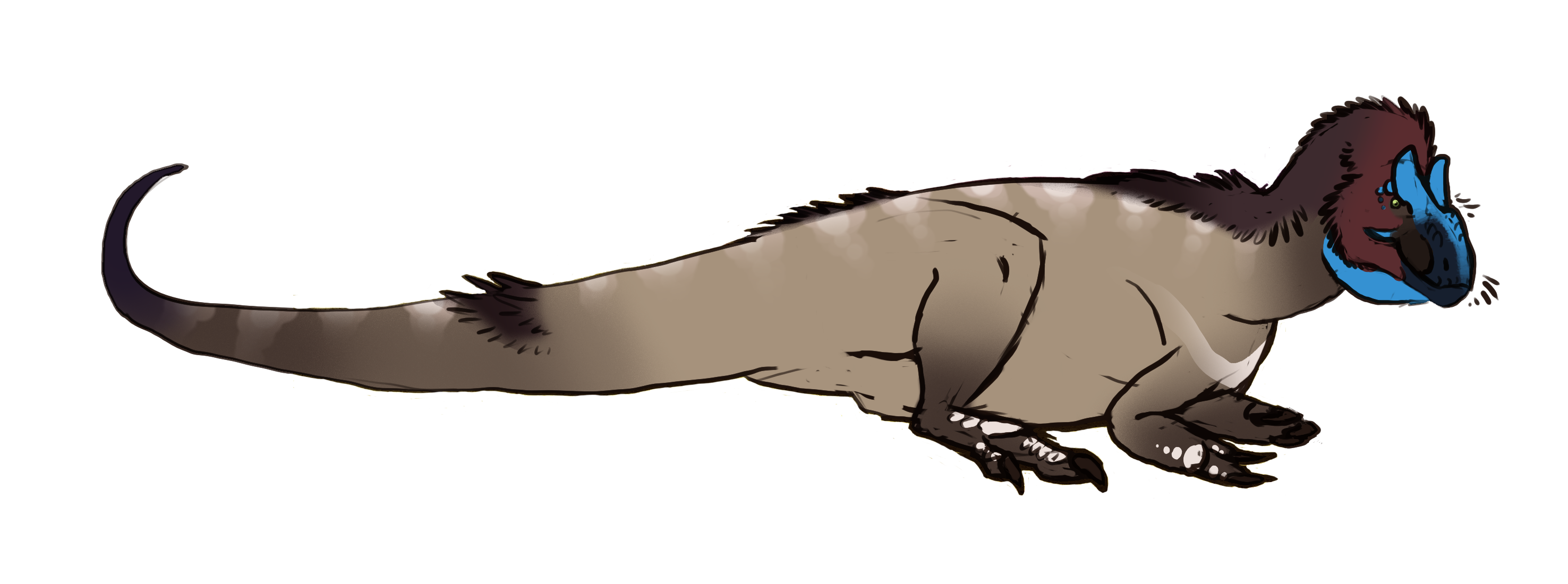Allosaurus

|
|
|
Allosaurus is one of the most common and well-understood North American dinosaurs. It was first named in 1877 by Othniel Charles Marsh during the infamous Bone Wars. The original fossil was very frgamentary, but since then far more complete specimens have been unearthed. Dozens of Allosaurus specimens have been found (the Cleveland-Lloyd quarry alone has revealed at least 44 individuals), providing scientists with a wealth of knowledge and earning it the spot as the official fossil of the state of Utah. Allosaurus can grow up to 32 feet or more, but averages smaller. Its skull is narrow and its teeth are thin and knifelike. Its head is crested, likely for display. Its torso is rather broad for a theropod. Its arms are strong, of moderate size, and tipped with large claws. Its legs are somewhat short and not exactly suited for high speed, but do give it a degree of speed. Hard evidence for a predatory lifestyle in Allosaurus comes in a Stegosaurus plate with an unmistakeable bite mark. Although Allosaurus has a low bite force relative to other large theropods, the skull can withstand high levels of force and stress. Its jaws can open up to a 79 degree angle. Its neck is well-muscled, and we've observed ours eating by ripping off chunks of flesh in a manner similar to that of falcons. Allosaurus lived in the arid forests of the late Jurassic. Its senses are well-rounded; it has a good sense of smell relative to many theropods, and its hearing favors low-frequency sounds. Many Allosaurus fossils show the injuires of a hard-knock predatory life, including some sustained in combat with other Allosaurus. We have three Allosaurus, which can be found not far from the entrance to the grounds. |
Scientific name Location Time Length Diet |